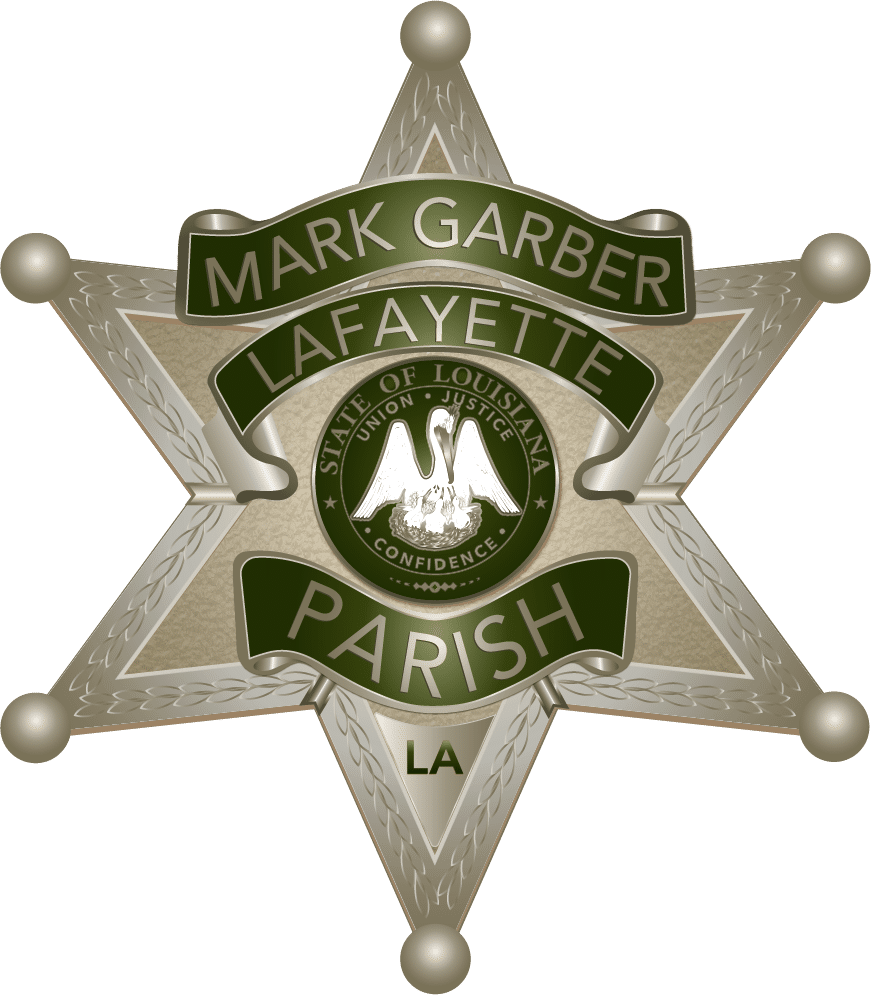Sheriff's Message
At the Lafayette Parish Sheriff’s Office, we are a family of approximately 750 committed, compassionate individuals with a passion for public service.
Since the start of my service as Sheriff to the people of Lafayette Parish, I have dedicated a great deal of our efforts and resources to mastering what I consider to be the core functions of our agency. These foundational responsibilities are criminal law enforcement, tax collection, service of process and management of our correctional facilities.
I have reorganized the overall structure of this agency, rendering it better-staffed and equipped for law enforcement operations.
As a result, the number of deputies patrolling the parish has doubled. This, in turn, has helped to foster an environment conducive to quicker response to calls for service and more proactive citizen contacts. Our patrol model has been shifted to a geographic, community approach wherein a designated group of deputies and their supervisors are assigned to patrol the same area of the parish each shift. This approach quickly enhanced the rapport and level of trust among residents and deputies; and continues to encourage cooperation and participation from victims and witnesses as well as increased suspect apprehensions.
Increased staffing in the Patrol Division has also proven to alleviate pressure from the Criminal Investigations Division. Patrol deputies are able to follow through with an investigation to the point of conclusion, thereby allowing my investigators to spend more time and resources on major and/or complex cases.
Reorganization has also had a positive impact on our Corrections Division. Shifts are now manned with the appropriate number of deputies to both supervise inmates and manage our various correctional facilities. These conditions contribute to a better and safer working environment for my staff, and have helped reduce employee turnover in the division. We have been proud to see an increase in the number of deputies opting to stay in corrections instead of transitioning into patrol or leaving for oil field jobs.
As public servants in Lafayette Parish we are humbled by the level of support we receive from a community we are so proud to protect and serve. On behalf of myself and the dedicated men and women of the Lafayette Parish Sheriff’s Office, we thank you for allowing us the privilege to serve and protect you and your family.
Mark T. Garber

Our Values
Vision Statement
As Lafayette Parish continues to stand out as the community of choice for new residents and businesses, the Lafayette Parish Sheriff’s Office will be a model agency for public safety—leading by example in our actions and our community partnerships, built on a foundation of public service and trust.

Our Motto
Serving the community with courtesy, professionalism and respect.
Mission Statement
The mission of the Lafayette Parish Sheriff’s Office is to be a committed leader of excellence in law enforcement by providing innovative professionals dedicated to serving the community through collaboration with the citizens we serve. As such, we will safeguard lives and property and execute the functions and duties of this office with the utmost excellence and dedication. The agency shall demonstrate excellence in all facets of policing, incarceration, and rehabilitation, thereby reducing the incidence of crime and fear within our community.
Administration

About the Sheriff
On November 21, 2015, Mark Garber was selected by the people of Lafayette Parish to serve as the 27th Sheriff of Lafayette Parish. In 2020, he entered into his second term of office. Sheriff Garber began his career in law enforcement serving as a commissioned deputy in Acadia Parish under then Sheriff Ken Goss. He then went on to serve as an enforcement agent with the Louisiana Department of Wildlife and Fisheries, and as a police officer with the City of Arlington, Texas. While in Arlington, Sheriff Garber served in the patrol division, traffic enforcement (as a motorcycle officer), field training officer, police sniper and special operations (Arlington’s version of SWAT team leader).
Sheriff Garber transitioned from local law enforcement to federal service when he was selected to join the United States Air Force Office of Special Investigations (OSI) as a civilian special agent, criminal investigator. As a special agent, Sheriff Garber was selected for deployment as a battlefield interrogator as part of a Special Operations Task Force in Iraq. Once in Iraq, Sheriff Garber assisted various Special Operations Forces by conducting battlefield interrogations and assisting with the exploration of intelligence information. Sheriff Garber is one of only a few civilian federal agents to have been awarded the Bronze Star Medal for activities in a combat theater of operations.
Following redeployment to the United States, Sheriff Garber continued his federal law enforcement service as a United States Secret Service special agent in the New York City field office. Upon his return to Lafayette, Sheriff Garber opened his private law practice and worked as a felony prosecutor with the 15th Judicial District Court. He served Lafayette Parish in this capacity for more than six years, becoming intimately familiar with the local criminal justice system.
With a degree from Louisiana State University and a Juris Doctorate from Southern Methodist University, Sheriff Garber has a unique combination of education and experience that was gained by years of being involved in the criminal justice process—from the initial investigation, arrest, prosecution, conviction and sentencing.
Chief Deputy
Colonel Carlos Stout began his law enforcement career with the Lafayette Parish Sheriff’s Office in 1990 as a corrections deputy. He then went on to work at the Lafayette Airport, on the Lafayette Metro Street Unit as an undercover detective and as a patrol supervisor. He left the Lafayette Sheriff’s Office in 2001 to run for Chief of Police in the community of Carencro. In 2002, he was elected as the Carencro Chief of Police and went on to win four re-elections.
Colonel Stout has also served as President of the Louisiana Association of Chiefs of Police, Louisiana Attorney General Command College, and the President of the Southwest Louisiana Chiefs of Police. Colonel Stout was additionally appointed by multiple Louisiana Governors to serve on the Council of Peace Officers Standards Training, Louisiana Commission on Law Enforcement, Louisiana Violent Crime and Narcotics Task Force, Drug Control and Violent Crime Policy Board and the Louisiana Domestic Violence Board.
Colonel Stout rejoined the Lafayette Parish Sheriff’s Office in 2016 after being selected by Sheriff Mark Garber to serve as his Chief Deputy.






